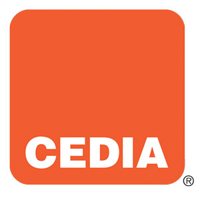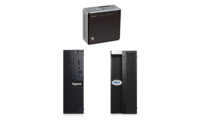
|
|
Contributed by the Custom Electronic Design & Installation Association. To learn more about CEDIA membership visit www.cedia.org/join. |
The industry term is “streaming video,” but at this stage it’s more like a flood.
From Netflix and hulu to YouTube and Vimeo, consumer demand for digital video delivery via the Internet is increasing exponentially. In a recent letter to shareholders, Netflix reported subscribers streaming more than three billion hours of video during the third quarter of 2012. Though Netflix is the largest streaming video provider, it still only represents approximately 30 percent of the overall market.*
So what does it all mean? Simply, it says clients want their programming and they want it now. If you’re integrating technology in the home, you must be prepared to deliver it. With that said, let’s take a deeper dive into the floodwaters and discuss what streaming is all about.
The term “streaming” comes from our friends in the IT world. It indicates that data is being sent in real time as a continuous stream of information, as opposed to being separated into multiple sections that are sent individually, checked for errors, and then re-combined on the receiving end. While the latter method ensures a higher degree of accuracy, it restricts the volume of data being sent and takes longer to process, making it a poor methodology for video applications.
In order to address the accuracy concerns, streaming video protocols typically include a function called “buffering.” Buffering is the act of storing some small amount of data locally. If the live Internet stream is momentarily interrupted (as it inevitably will be), the buffered (or stored) video will continue to render while the system recovers and the data stream begins sending information again.
While streaming can refer to practically any audio/video information being sent over a network, for the purposes of this discussion, let’s focus on video content stored in the cloud and streamed through the home network. Virtually all of the streaming video content providers today allow clients to access these cloud-based libraries via a Web browser, but not everyone has a computer hooked up to their home entertainment system. Therefore, the question becomes: How do we help clients access the endless hours of content stored out in the inter-Webs? The answer is easy: There’s an app for that!
Most TV manufacturers now sell smart TVs that offer built-in Internet connectivity and access to streaming video service applications. Many Blu-ray players and gaming systems (including Xbox 360, PS3, and Wii) now include app-based access to providers like Netflix, YouTube and hulu. In addition to these multipurpose devices, a growing number of companies have developed network-connected stand-alone set top boxes specifically designed to act as gateways from a home entertainment system to source material on the Internet. Examples include Apple TV, Roku and Boxee Box.
It’s clear streaming video represents a huge opportunity and there are tons of products available for you to sell to your clients. So what are the next steps? First, all of these products and services rely on a robust network infrastructure, so make sure you are educated on designing and implementing a home network that can handle the massive data transport requirements of HD video. Next, make sure you understand digital video cabling and connectors such as HDMI. (A good start is by reading the article, “HDMI: More Than Meets the Eye,” available at www.sdmmag.com/articles/88457-hdmi-more-than-meets-the-eye). Finally, take some time to evaluate the different products and services available in the streaming video market so that you can make informed recommendations to your client based on their particular needs. To learn more, check out all of the educational offerings available through CEDIA at cedia.net/education and consider becoming a CEDIA member today.
The aforementioned conversation that has to occur between devices is actually called the HDMI initialization sequence (commonly called “handshake”) and the first step in this sequence is known as “Hot Plug.” Hot Plug is a +5v signal sent between the source and display, acknowledging that they are connected to each other. This is the wakeup call telling both devices to begin sharing information. If the +5v Hot Plug pulse does not occur, or attenuates to the point of being below the threshold voltage, then you basically get nothing. Game over — go directly to troubleshooting; do not pass go, do not collect picture or audio.
The second step in the initialization sequence is known as the Extended Display Identification Data (EDID) standard. It was originally developed by the Video Electronics Standards Association (VESA) to support plug-and-play functionality within the computer community. The idea is that by having a display share its formatting/processing capabilities with the source, a consumer would always experience the highest-quality video and audio within the system’s capabilities. While fantastic in theory, manufacturers have struggled somewhat with implementing EDID correctly across all products since its adoption within the consumer electronics space. Because a display’s EDID is responsible for instructing the source on how to format and send the A/V information, incorrect communication may cause all sorts of seemingly odd anomalies — stereo instead of multi-channel audio, wrong aspect ratios, incorrect colorimetry, lower-than-optimal resolutions, or even no video/audio at all. It is important to note that the complexities of EDID processing increase exponentially when using HDMI splitters or matrix switches connected to multiple displays with differing EDIDs.
The final step in the “handshake” process is copyright authentication, also known as High-Bandwidth Digital Content Protection (HDCP). I have often heard it affectionately referred to within the industry as “Hollywood’s Defense against Chinese Piracy.” HDCP was developed by Intel as a copy-protection scheme requiring key exchanges between authorized devices before allowing content to be viewed. While this may seem perfectly reasonable and easy to execute on the surface, there are multiple factors that contribute to authentication failures within a significant number of HDMI systems.
First, even though HDMI v1.0 was officially launched in 2003, no HDCP compliance testing specifications existed until 2006. Second, the HDMI specification allows for up to 127 different “key” values per device; yet, many manufacturers assume their source device will be connected to only one display, and therefore implement a measly one to three keys. This can be a major problem if you are sending the signal from that source to multiple destinations. Unless the splitter/matrix switch you’re using has the ability to monitor and enforce HDCP compliance internally, when more displays are connected than there are keys for the source to hand out, you will typically end up with either the “flashing screen of death” or a beautiful image of the environment described by Edgar Allen Poe in the “Pit and the Pendulum.” Lastly, it is possible for manufacturers to issue firmware updates affecting the way HDCP is handled by their devices and these updates can break a system of devices that were previously working together quite well.
While this exercise of peeling back the jacket to expose the internal workings of HDMI may not have been quite as exciting as watching an everyday object transform itself into a walking, talking, superhero robot, hopefully it has given you some ideas about how to be successful when dealing with the complexities of today’s most popular digital video transmission medium. Armed with this knowledge (which is almost as cool as being armed with a plasma cannon, right?), it is now your job to go out and provide your clients with systems of the highest quality and reliability.
To learn more, check out the CEDIA Marketplace online or use the CEDIA app on your smartphone to find our white paper series on HDMI. Be sure to keep an eye on the CEDIA calendar of events for in-person and hands-on training sessions, including the Home Theater Boot Camp and HDMI Workshop.
This article was previously published in the print magazine as "Of Cloud & Stream: Today's Digital Video Delivery Platforms."
*Edwards, Cliff. “Netflix Dominates Streaming Rivals in Web-Video Market.” Bloomberg. N.p., 07 Nov. 2012. Web. <http://www.bloomberg.com/news/2012-11-07/netflix-dominates-streaming-rivals-with-growing-web-video-share.html>.
Roettgers, Janko. “Netflix to Miss 2012 U.S. Subscriber Goal, but Things Look Better Abroad.” Gigaom. N.p., 23 Oct. 2012. Web. http://gigaom.com/2012/10/23/netflix-to-miss-2012-u-s-subscriber-goal-but-things-look-better-abroad/







